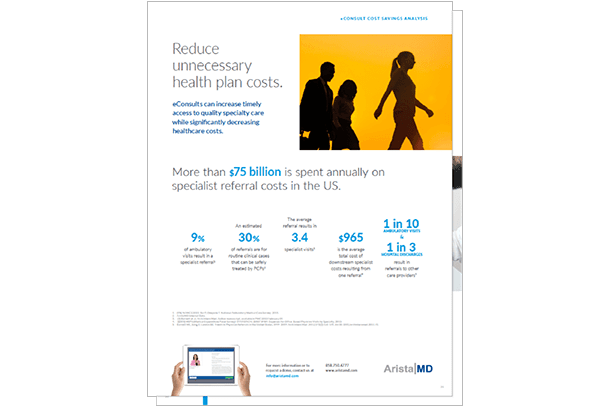Telehealth Cost Saving Analysis
eConsults Increase Timely Access to Quality Specialty Care with Significant Decrease Healthcare Costs
More than $75 billion is spend on unnecessary referral costs annually in the US. With over 70% of eConsults replacing unnecessary specialist visits, eConsults pose an impactful solution to improve utilization of resources. Get the numbers in our eConsult cost savings analysis download.
Request a Demo

eConsult Program Analysis: Save $3M in Annual Telehealth Cost Savings
Wondering what your organization’s ROI could be by leveraging an eConsult program? Learn more about why innovation is essential within the transition to value-based care, and what your telehealth cost savings could be through an in-depth analysis of how eConsults reduce unnecessary spending while improving access to quality care.
Within the shift from fee-for-service payment models to value-based care, it has become increasingly important for healthcare providers to focus on optimizing the referral process and referring patients to the right place at the right time. Health plans are missing out on critical programs to support this transition. An assessment of telehealth cost savings is essential when assessing tools and resources to support organizational goals.
In addition to increasing access to quality specialty care, telehealth cost savings result from decreased healthcare spending stemming from unnecessary referrals, chronic disease management, and high-risk patients.
National health expenditure growth is expected to average 5.5 percent annually over 2017-2026, according to a report published today as an “Ahead Of Print” by Health Affairs and authored by the Office of the Actuary at the Centers for Medicare & Medicaid Services (CMS). Growth in national health spending is projected to be faster than projected growth in Gross Domestic Product (GDP) by 1.0 percentage points over 2017-2026. As a result, the report projects the health share of GDP to rise from 17.9% in 2016 to 19.7% by 2026.

